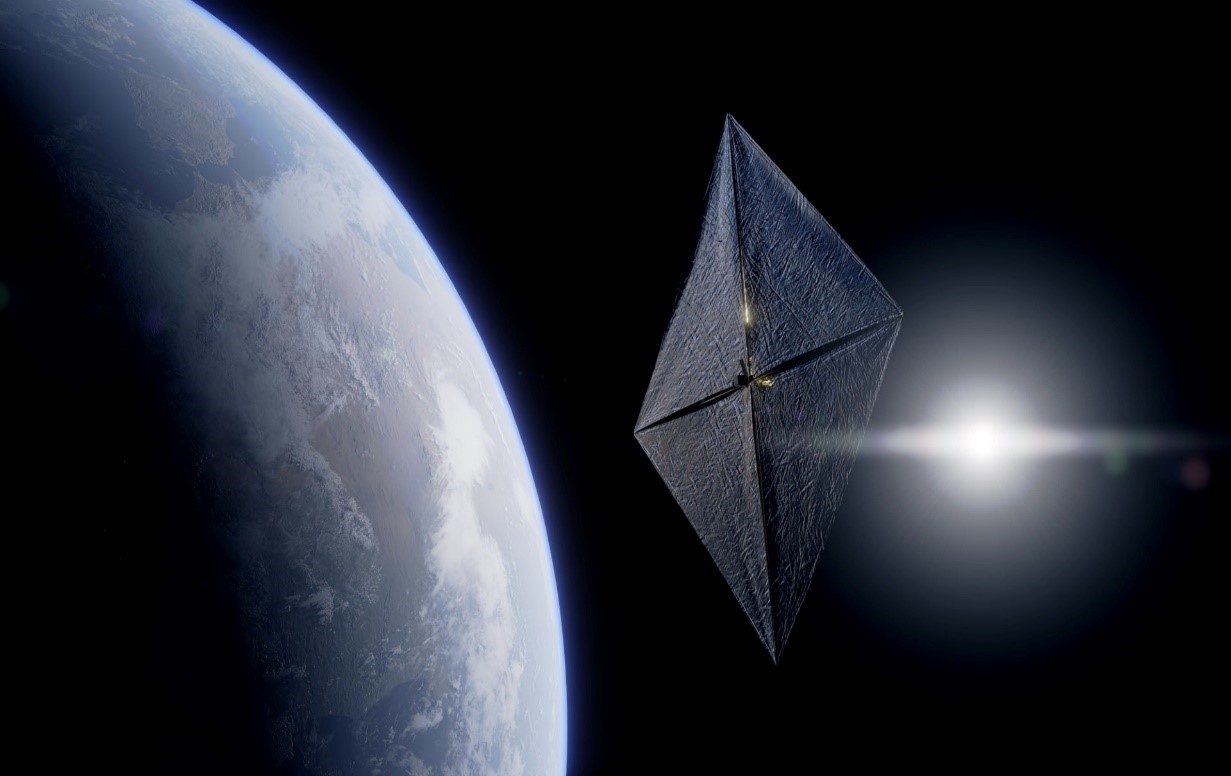NASA's Ambitious New Mission Involving A 'Solar Sail' Could Pave the Way for Interstellar Travel
Interstellar travel, the aspiration to venture beyond our Solar System and explore the stars, has remained an enduring goal for humanity. However, the seemingly boundless expanse of space has posed a formidable challenge. Proxima Centauri, our closest star, resides a staggering 4.24 light-years away, equivalent to 40 trillion kilometers or 25 trillion miles. Even at its current velocity of approximately 56,000 km/h, NASA's Voyager 1 spacecraft would require nearly 73,000 years to traverse such a vast distance.
By all indications, the waiting period is simply too extensive. However, on April 23rd, NASA marked a significant stride towards feasible interstellar travel by initiating the launch of its Advanced Composite Solar Sail System from a launchpad in New Zealand. [1] Enthusiasts and science fiction aficionados alike are eagerly anticipating whether this innovative system, utilizing lightweight sails instead of conventional rockets for propulsion in space, could herald the dawn of a new era in long-distance space exploration.

Figure 1. NASA's Groundbreaking Mission with a 'Solar Sail' Might Open Doors to Interstellar Travel
The Functioning of Solar Sails
Figure 1. NASA's Groundbreaking Mission with a 'Solar Sail' Might Open Doors to Interstellar Travel. Many spacecrafts, including Voyagers 1 and 2, rely on thrusters for propulsion, utilizing the momentum generated by ejected fuel to propel them through space. However, this method presents a significant limitation: once the fuel is depleted, the spacecraft's speed becomes restricted. This constraint is particularly challenging considering the substantial amount of fuel required for spacecraft to overcome Earth's gravitational pull. Yet, an alternative exists – an external and virtually limitless fuel source: the Sun. Light from the Sun, like all light, consists of particles known as photons. Despite lacking mass, photons possess momentum. By employing large, reflective sails, spacecraft can harness this momentum as photons strike and rebound off them.
While such energy utilization wouldn't propel a vessel very far here on Earth – hence the absence of solar-powered voyages across the Atlantic – in the vacuum of space, devoid of air resistance, even the subtle push from the Sun is sufficient. "Even though each photon carries a minuscule amount of momentum, the Sun emits an immense number of photons. Consequently, while the acceleration may be gradual, you experience continuous acceleration as long as you are exposed to the star's light," explains Prof. Patrick Johnson, author of The Physics Of Star Wars, to BBC Science Focus. In addition, solar sail systems operate analogously to conventional sailing boats – you can even maneuver 'upwind' towards the Sun if desired.
What Speed Could an Interstellar Explorer Utilizing Solar Sailing Achieve?
The potential speed of a solar sail system in accelerating its spacecraft hinges on three key factors: the size of the sail, the mass of the spacecraft, and the distance from the Sun. While addressing the first two components is relatively straightforward – constructing a solar sail as large as possible while keeping the spacecraft lightweight – navigating the distance from the Sun poses a greater challenge. Light intensity from the Sun adheres to the inverse-square law, meaning that with each doubling of distance from the Sun, sunlight hitting a given area diminishes by a quarter. However, scientists have devised innovative strategies to overcome this distance limitation.
One such method is the slingshot maneuver, commonly employed by spacecraft to navigate the Solar System. NASA estimates that by utilizing this technique and slingshotting a small satellite around the Sun at a distance of approximately two to five solar radii (equivalent to 1.4 million - 3.5 million kilometers), speeds exceeding 108,000 km/h could be attained – approximately double the velocity of Voyager 1. Yet, even greater speeds are conceivable. In 2016, Breakthrough Initiatives unveiled plans for a mission to the Alpha Centauri triple star system utilizing powerful lasers to provide spacecraft with an additional boost. Theoretically, these spacecraft could reach velocities approaching a staggering 20 percent of the speed of light (equivalent to 216 million km/h), potentially enabling arrival at Alpha Centauri within a mere 20 years.
The prospect of achieving such feats evokes a sense of wonder and excitement, as noted by Johnson: "It’s amazing and ridiculous and awesome to think that we could get a human-made spacecraft to another star system in my lifetime." However, Johnson also underscores the importance of addressing potential concerns, such as the implications of directing powerful lasers towards spacecraft. He cautions against potential risks, emphasizing the need for careful consideration and responsible planning to avoid unintended consequences.
Is it conceivable for humans to embark on a journey to another star one day?
Johnson believes that solar sail technology could eventually enable humans to become an interstellar species, despite significant challenges. Sending humans on such a mission would require a spacecraft capable of sustaining life for generations, addressing relativistic effects, and overcoming substantial costs. [2] NASA's solar sail mission demonstrates this technology, deploying sails spanning 80 square meters to test various maneuvers and gather data for future missions. Ultimately, the goal is to develop larger solar sails for more ambitious space exploration endeavors.
References:
- https://www.nasa.gov/general/nasa-next-generation-solar-sail-boom-technology-ready-for-launch/
- https://www.sciencefocus.com/space/nasa-solar-sail-interstellar-travel
Cite this article:
Janani R (2024), NASA's Ambitious New Mission Involving A 'Solar Sail' Could Pave the Way for Interstellar Travel, Anatechmaz, pp.925

